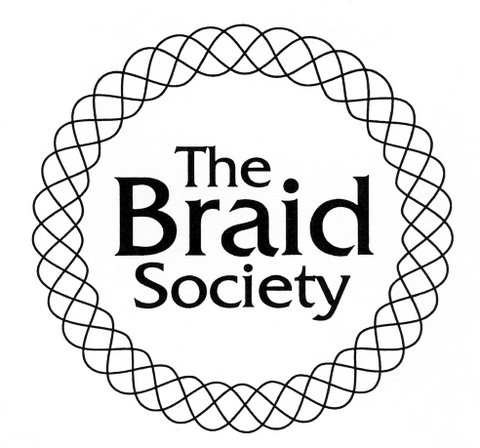| Members can log in by clicking on icon to the right |
Plaiting
Pin down the strands on to your work surface.
| |
Make the plait by working the outer strand into the centre, first from one side and then from the other side.In the illustration the next move will be from the left into the centre. As you can see, the colours used will work their way from side to side. You can experiment with thick and thin yarns and different colours. You can use paper strips, raffia or straw and recycled plastic bags cut into strips. Plaits can be sewn together to make mats and bags and coiled round and sewn to make containers. By overlaping a new strand before reaching the very end of one, you can carry on plaiting. Move the pins up the plait as you work to keep an even tension and the plait looking the same. |
|
| |
This next diagram is for the seven strand plait, illustrated as four light and three dark strands. When you have many strands, put them over a cord or lolly stick pinned down on the board. The next move is to bring the outside left hand light strand over the other three into the centre followed by the outside right dark strand into the centre. If you hold the groups of threads, one in each hand, the group that has four strands held makes the next move. Play around with the colours for this plait and find out the effect on the appearance of the plait and which combination you like best. Keep the tension firm. |
 |
This bride’s wedding ornament, now owned by June Barker, is made of plaits assembled in colours of red, blue, green and yellow. It's is very splendid. The Bride would have worn a matching pair. |
 |
In order to build on what you learned earlier, here are some other plaits to try.
Armed with your piece of soft board and T pins, try a nine strand plait worked from left and right alternately under two strands and over two. An eight strand plait could be made with five strands in the left hand and worked alternately from the left under three and over one, from the right over three. |
Try different colour combinations with these plaits and vary the material used from stiff raffia to soft wool and see what results you can obtain.
Rick Rack Braid or Zigzag plait
 |
 |
The pictured example (above right) is woven with florists ribbon with 4 blue ends and 4 white ends and there are 7 steps to the right and then 7 steps to the left repeated and the eighth thread follows the straight path.
You can have fun with the type of threads and the colours chosen. Copy the diagram and colour it in and see what effects you will obtain once the threads are pulled up firmly.
(Hint - alternate colours will give straight lines).
You can use thick or thin threads, multiple strands, straw, raffia, and ribbons or rags.
Experiment and have fun.
Begin Braiding is based on original material prepared by Felicity Tregear.
To download a printable version of this page, please click here
